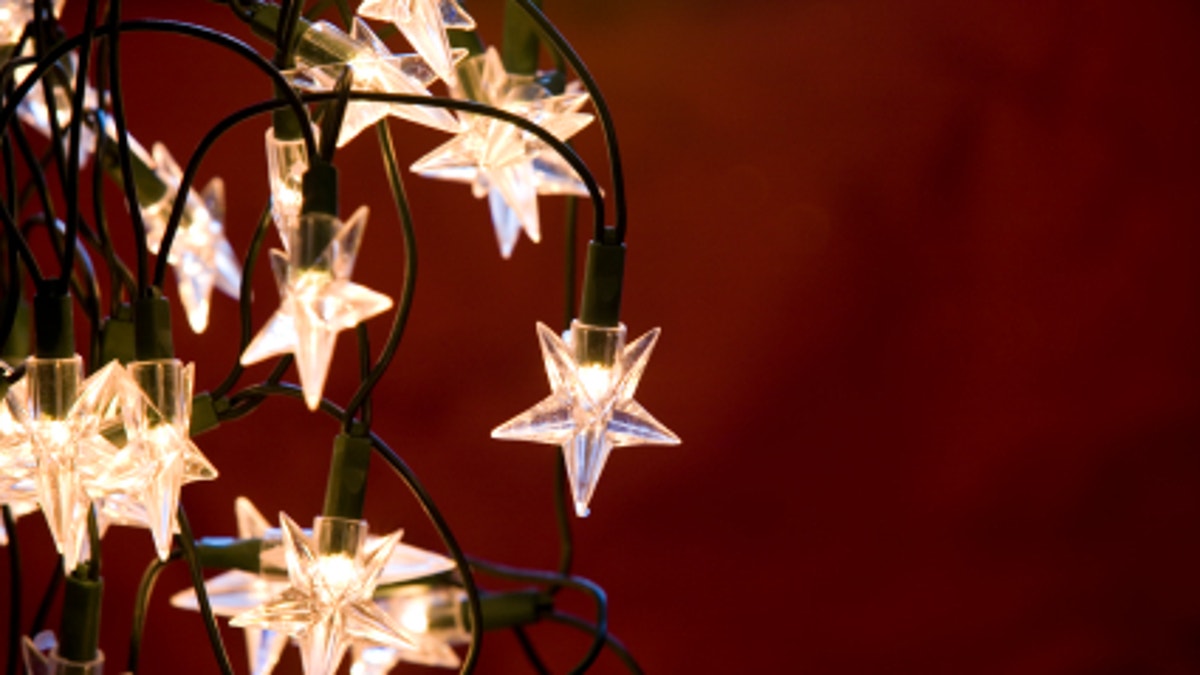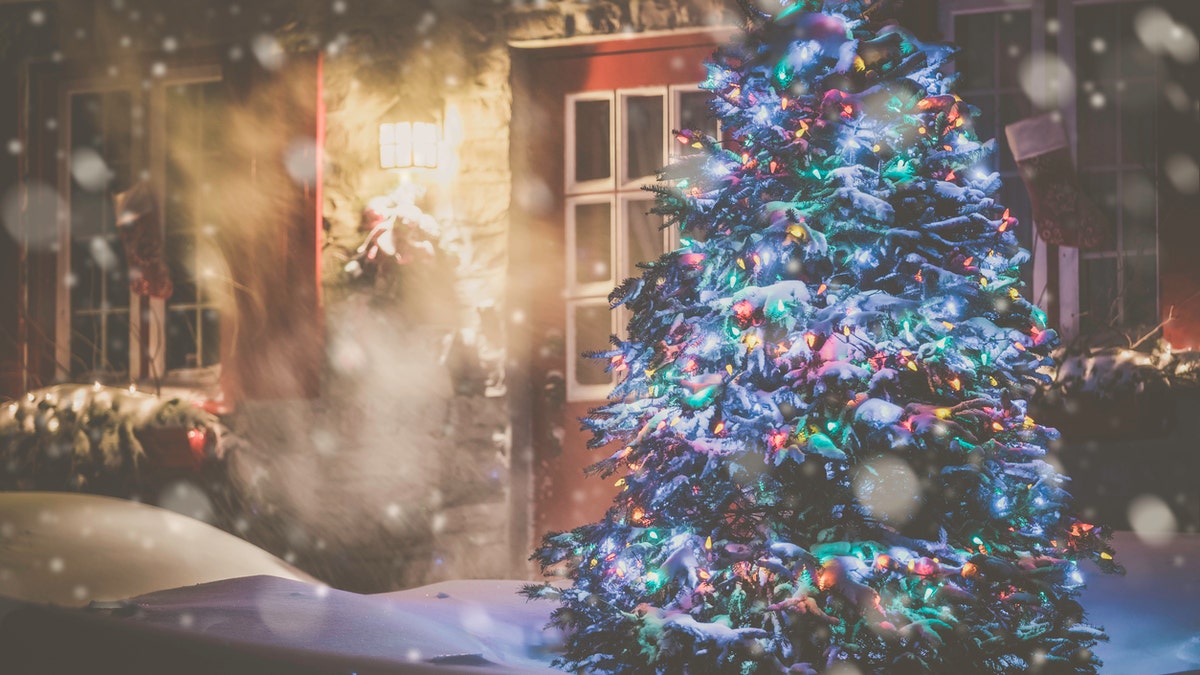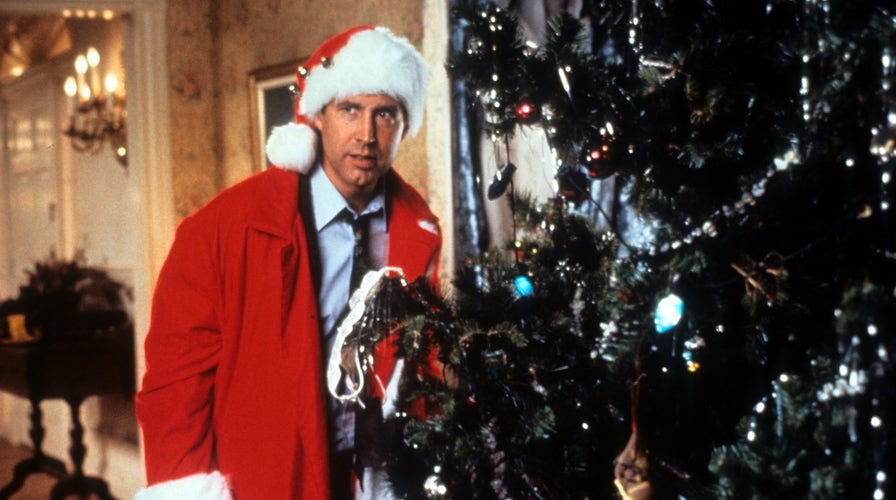Fox Square Christmas tree lighting
Fox Nation hosts Kacie McDonnell and Abby Hornacek ring in the holiday season.
Christmas without a "Clark Griswold" house is like a night without stars. Every block needs a house so strung out it can be seen from outer space.
If that’s your house, you can’t control if your neighbors will love you or hate you for it. But you can minimize your expenses and your chances of ending up in the emergency room. (In 2017, the U.S. Consumer Product Safety Commission estimates holiday decorating is responsible for more than 15,000 trips to the ER.)
Here are a few lifesaving and money-saving tips to keep in mind.
1. Follow the rule of three
Sean Dore, owner of Mr. Electric, cautions against connecting more than three strands of incandescent lights together on one extension cord. Doing so can cause overheating and, potentially, house fires. “The rule of three stands regardless of the distance of the strands of lights,” says Dore.

Don't be a Griswold — at least when it comes to your holiday lights. (Getty Images)
2. Pay attention to your extension cord
In a November 2018 survey, The Hartford insurance company found that 44% of Americans buy the least expensive option when it comes to extension cords. Deputy Chief Jimmy Walker of The Hartford’s Junior Fire Marshal Program recommends investing in one rated for outdoor use, and never running it under a rug. “Extension cords can overheat,” says Walker. “If covered with a rug, any heat is trapped and can’t escape.”
3. Don’t use a metal ladder
Use a ladder made of fiberglass, plastic or wood when hanging your lights. Metal is a good conductor of electricity, and even if the electric shock doesn’t significantly injure you, the shock of being shocked might cause you to fall. The Environmental Health & Safety department at the University of Iowa estimates that 300 people die from ladder-related incidents every year. In 2017, the 82-year-old Canadian man behind the famous “Burlington Griswold House” died following a ladder fall.

Thirty-one percent of Americans who decorate don’t check to see if their lights are rated for indoor or outdoor use. (iStock)
4. Repurpose a painter’s pole
“If you want to avoid using a ladder, you can take the roller off of a painter’s pole and use the hook at the end,” says Jennifer McDermott, consumer advocate at Finder.com. McDermott also stresses the importance of having your lights organized and wrapped in a loose circle in advance, so you don’t have to deal with the distraction of untangling lights while working in the hard-to-reach areas.
5. Use the right lights
According to The Hartford survey, 31% of Americans who decorate don’t check to see if their lights are rated for indoor or outdoor use. It also found that 41% use lights or electric decorations that are more than 10 years old. “Indoor lights are not made to withstand cold and wet conditions and could degrade,” explains Walker, who recommends inspecting, and if necessary, updating, your lights.
6. Plan before you purchase
To avoid buying too many lights or making return trips to the store for more, take measurements in advance. While it never hurts to look on Craigslist first for a set of used ones in good condition, the best option is to wait until after Christmas when holiday décor gets substantially marked down. Shop in stores for the best deals. Most retailers don’t have enough leftover décor to list online, but their brick-and-mortar locations often discount up to 80% to avoid having to ship product back and to make space for next season’s goods.
7. Use an image projector instead
Just because your parents hung lights doesn’t mean you have to. Projectors are not only easier to set up, but they’re also cheaper. For example, a swirling snowflake projector at Home Depot is around $25 while a string of icicle lights will set you back $35 and an eight-pack of replacement bulbs, $9. “Most people require at least 20 strings of 200-300 lights,” says Rachel Cruze, a personal finance expert and co-author of “Smart Money Smart Kids” with her dad, Dave Ramsey. Cruze also recommends projectors because they use LED lights and are easier on the electric bill.

But the best way to ensure you never forget to turn off your lights is to use a timer. (iStock)
8. Set up a timer
You could write yourself a note, but the best way to ensure you never forget to turn off your lights is to use a timer. Sophie Kaemmerle, a home and safety writer for NeighborWho.com, recommends the myTouchSmart Plug-in Outdoor Wi-Fi Smart Switch, $31, if you need the smart capabilities and the Woods Outdoor 24-hour Photoelectric Timer with Remote Control 3-Outlet, $20, if you don’t. According to this Wired article, Clark Griswold’s setup, assuming he used old-fashioned incandescent lights, would cost about $3 per hour to run. Leaving them on overnight, therefore, could cost as much as $24 a night. Or it could cost you your house. In 2017, a Tennessee home went down in flames after Christmas lights were left on 24/7.
9. Use LED lights
According to the Washington Post’s number crunching, it costs the same to run 25 incandescent C9 light bulbs — the kind you probably grew up with — as it does to run 1,800 LED lights. It is worth noting, however, that LED lights are more expensive to buy. A string of 25 incandescent C9 light bulbs might cost $10, whereas a 25-pack of LED C9 light bulbs is $25.Therefore it only makes financial sense to buy LED lights if you plan on using them for more than one season. (According to Lowe’s, incandescent holiday lights last 4-6 seasons while LED lights can last 10 or more seasons.)
10. Maintain your lights
To save money on lights, keep your current lights in good condition. Secure them with plastic clips or Command hooks instead of staples, which can damage the wires. Try to take them down immediately after Christmas, and don’t just toss them in a bin. Housekeeping.org recommends wrapping them around cardboard or even Pringles cans to prevent tangles and broken bulbs.

